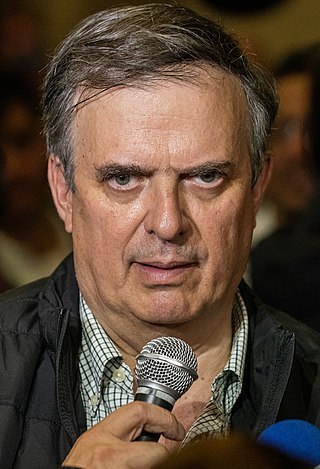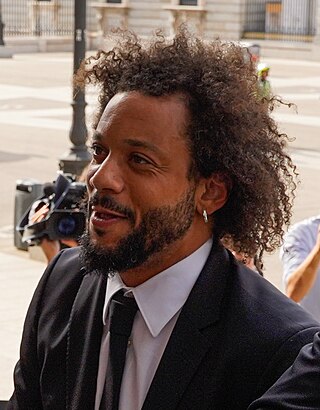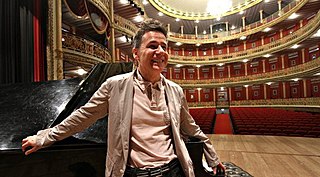Related Research Articles

José Marcelo Salas Melinao, nicknamed Matador, El Fenómeno and Shileno, is a Chilean former footballer who played as a striker. Salas is considered the best striker in the history of Chile. He stood out during the 1990s and 2000s in clubs such as Universidad de Chile, River Plate, Lazio and Juventus. He was the captain of the Chile national team and the top scorer – scoring 45 goals in total: 37 goals for the Chile national football team and 8 goals with the Chile Olympic football team.

Marcelo Balboa is an American former professional soccer player who played as a defender in the 1990s for the United States national team, becoming its captain. He is a member of the National Soccer Hall of Fame.

Marcelo Nuno Duarte Rebelo de Sousa is a Portuguese politician and academic. He is the 20th and current president of Portugal, since 9 March 2016. He is a member of the Social Democratic Party, though he suspended his party membership for the duration of his presidency. Rebelo de Sousa has previously served as a government minister, parliamentarian in the Assembly of the Portuguese Republic, legal scholar, journalist, political analyst, law professor, and pundit.

Marcelo Luis Ebrard Casaubón is a Mexican politician who has served as the secretary of economy since 2024. He previously served as Secretary of Foreign Affairs under President Andrés Manuel López Obrador from 2018 to 2023. He served as Head of Government of the Federal District from 2006 to 2012.

Marcelo Alberto Bielsa Caldera is an Argentine professional football manager who is the current manager of the Uruguay national team. He is widely regarded as one of the most influential coaches of all time. Bielsa is a former player having played as a defender for Newell's Old Boys, Instituto and Argentino de Rosario.
Marcelo Filippini is a former professional tennis player from Uruguay.

Marcelo Daniel Gallardo is an Argentine football manager and former professional player who is the current head coach of River Plate. During his playing career, Gallardo was an attacking midfielder and playmaker. He was regarded for his vision, technique, class, dribbling and especially his defence-splitting passing.

Łukasz Kubot is a former Polish professional tennis player who was ranked world No. 1 in doubles.

Marcelo Vieira da Silva Júnior, known as Marcelo, is a Brazilian professional footballer who most recently played as a left-back for Campeonato Brasileiro Série A club Fluminense. Widely regarded as one of the greatest left-backs of all time, he is known for his attacking capabilities. He spent most of his career with La Liga club Real Madrid and is one of the club’s most decorated players, winning 25 trophies.

Marcelo Pinheiro Davi de Melo is a Brazilian professional tennis player who is a doubles specialist. He is a former world No. 1, which he achieved in November 2015. Melo is the only Brazilian player who has reached number one in the ATP doubles rankings.

Marcelo Martins Moreno, known as Marcelo Martins in Bolivia and as Marcelo Moreno in other countries, is a Bolivian former professional footballer. He is considered one of the greatest Bolivian players of all time. With 108 caps and 31 goals, he is the national team's all-time capped player and all-time top goalscorer.

Marcelo Antônio Guedes Filho, commonly known as Marcelo, is a Brazilian professional footballer who plays as a centre-back.
Marcelo Martelotte is a Brazilian professional football coach and former player who played as a goalkeeper.

Marcelo in the Real World is a young adult novel by Francisco Stork. Published in 2009, this award-winning book tells the story of a summer in the life of 17-year-old Marcelo Sandoval, a boy with Asperger-like characteristics.
Marcelo de Oliveira Santos is a Brazilian professional football manager and former player.

David Paul M. Marcelo is a Filipino professional basketball player for the NLEX Road Warriors of the Philippine Basketball Association (PBA). Marcelo was drafted by B-Meg in the 2012 PBA draft as the 12th overall pick.

Marcelo Ribeiro Cabo is a Brazilian professional football coach, currently the head coach of Água Santa.

Marcelo Augusto Oliveira Chamusca is a Brazilian professional football coach and former player who played as a defensive midfielder. He is the current head coach of Floresta.

Marcelo Bratke is a Brazilian pianist.

The sixth federal electoral district of Guerrero is one of the 300 electoral districts into which Mexico is divided for elections to the federal Chamber of Deputies and one of eight such districts in the state of Guerrero.
References
- ↑ "Perfil: Dip. Marcelo Tecolapa Tixteco, LIX Legislatura". Sistema de Información Legislativa (SIL). SEGOB . Retrieved 11 August 2024.